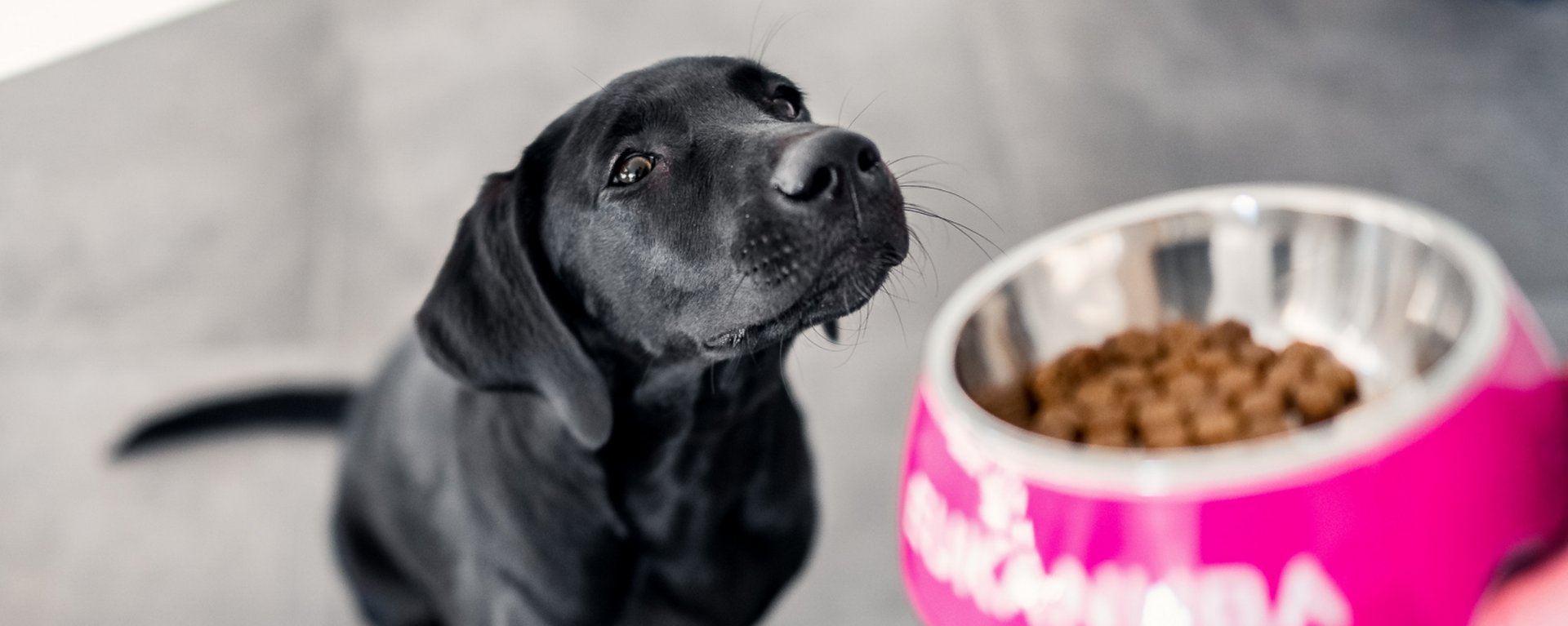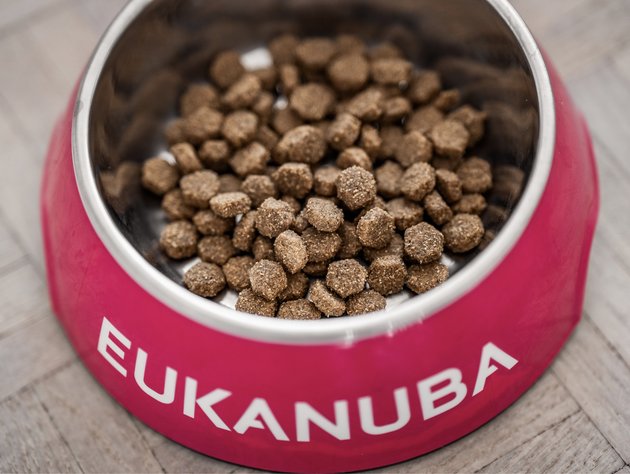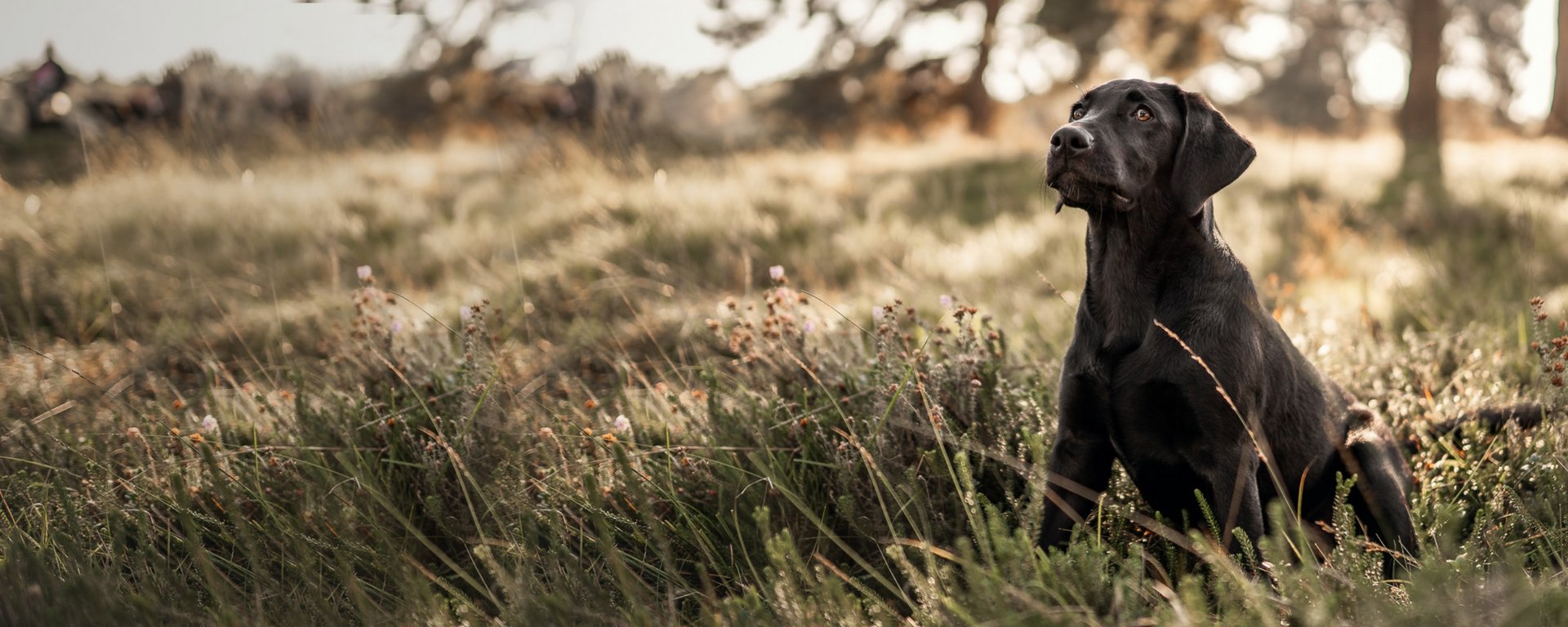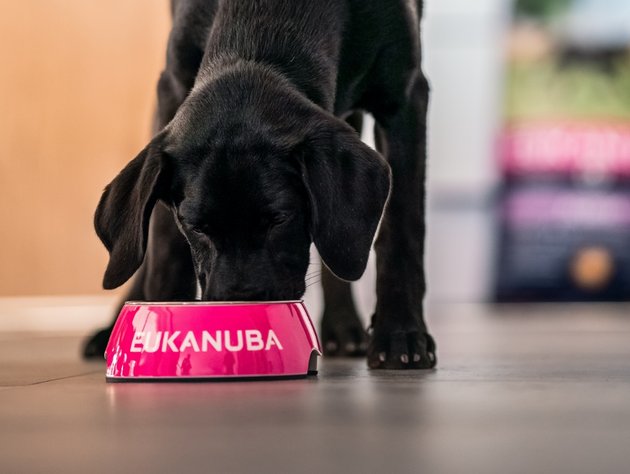Guida nutrizione cucciolo
Proprio come i bambini, i cuccioli hanno esigenze nutrizionali diverse dagli adulti. Quando si sceglie un alimento per cuccioli, scegliete con la stessa cura con cui scegliereste una pappa per neonati per garantire che essi abbiamo il miglior inizio possibile. La nutrizione che gli fornite ora porrà le fondamenta per una vita lunga e in salute.

Avere un nuovo cucciolo significa molto più dell'alimento che si dà loro. I legami che si formano con il vostro nuovo compagno dureranno per molti anni a venire. Naturalmente, addestrerete il vostro cucciolo ai giusti comportamenti, ma prima di tutto è importante che il cucciolo si senta amato e sicuro nella sua nuova casa e con le persone che formeranno la sua nuova famiglia.
Essendo già stati svezzati dal latte materno dal vostro allevatore, il vostro cucciolo avrà bisogno di un alimento per cucciolo di alta qualità che fornirà una nutrizione completa e bilanciata al 100%.

The right food
Cercate un alimento per cucciolo di qualità
Un alimento per cucciolo di buona qualità contiene alti livelli di proteine e grassi, acidi grassi omega-6 e omega-3 e una gamma di vitamine e minerali per aiutare a mantenere il vostro cucciolo in condizione fisica ottimale. Anche il tipo di proteina è molto importante visto che fornisce le basi nutrizionali per supportare una crescita sana e lo sviluppo del tuo cucciolo. Scegliete un alimento per cucciolo fatto con proteine animali di alta qualità come pollo, agnello o pesce.
The expert's choice
Crediamo che un alimento per cucciolo dovrebbe contenere i seguenti elementi
- Proteine animali di alta qualità – per sostenere la crescita sana e lo sviluppo per muscoli e ossa
- DHA per migliorare la capacità di apprendimento e l'addestrabilità
- Prebiotici FOS e polpa di barbabietola per favorire una digestione sana
- Gli acidi grassi Omega-6 e 3 bilanciati per una cute e manto sani.
- Vitamina E & C per contribuire a sostenere un sano sistema immunitario

Size matters
Diete diverse per cani di taglia diversa
I cuccioli vivono il loro periodo di crescita più veloce durante i primi sei mesi di vita, utilizzando quasi due volte l'energia di un cane adulto su un grammo per grammo di peso corporeo. Poiché la capacità dello stomaco è ancora in via di sviluppo è importante che abbiano una dieta su misura per le loro esigenze nutrizionali e taglia.
- Cuccioli di taglia toy e small sviluppano un elevato fabbisogno di proteina, grasso e calcio nella loro dieta.
- Cuccioli di taglia grande e gigante hanno bisogno di livelli controllati di proteina e calcio per supportare un indice di crescita più lento. Cuccioli di taglia grande potrebbero continuare a crescere sino a 24 mesi!
- Cuccioli di taglia media sono un po' nel mezzo di queste due linee guida.
How do i know how much food my puppy needs per day?
Unfortunately, there is no universal number of calories that a puppy needs at the age of 4, 6 or 10 months.
However, the right amount of food depends on various factors:
- Type of food: dry/wet food, mix, BARF, home-prepared
- Current age of the puppy in months
- Current weight of the puppy
- Expected final weight
- General state of health
- Activity level
All of this means that you will need to continually adjust the amount of food your puppy eats over time as its body changes as it grows. It is not only important to provide your puppy with enough food, but also to ensure that you do not overfeed him. For large breeds in particular, a comparison of the current weight with the expected growth curve is also a helpful tool. If you are unsure, always consult your vet.
The 1x1 of puppy feeding
Consigli sull'alimentazione di un cucciolo
Dopo aver scelto il cibo per il vostro cucciolo, ricordate questi suggerimenti per assicurarvi che il vostro cucciolo mangi sano:
- Misurate la porzione correttamente. Iniziate con una quantità giornaliera raccomandata sul sacco e dividetela per il numero di volte che alimenterete il vostro cucciolo (una volta la mattina e una volta la sera).
- Rimuovete la ciotola dopo 30 minuti che hanno avuto la possibilità di mangiare. Ciò evita una sovralimentazione che può portare ad un incremento non sano del peso.
- Assicuratevi sempre che il vostro cucciolo abbia accesso alla ciotola dell'acqua fresca e cambiatela regolarmente per mantenerla fresca.
- Controllate regolarmente il loro peso muovendo le mani lungo i fianchi. Dovreste essere in grado di sentire le costole. Dovreste essere in grado di vedere la loro vita se guardate in basso verso di loro o lateralmente. Leggete la nostra utile guida per mantenere il vostro cane in condizione fisica ottimale.
- Ricordate, tutto l'alimento EUKANUBA Puppy è completo e bilanciato per le loro esigenze nutrizionali. Aggiungere altro alla loro dieta può interferire con l'assorbimento di minerali nel loro cibo.
Se siete preoccupati per qualsiasi aspetto nutrizionale del vostro cucciolo o il loro peso, portateli dal vostro veterinario per un controllo.
Changing the food
When should your puppy move on to adult food?
In the early weeks and months, puppies need special nutrition to help them form strong bones and provide them with enough energy to keep up with the demands of all that growing. Once they become an adult dog it's important to choose their food carefully to build on the good foundation their puppy food provided.
The time at which your puppy becomes an adult dog depends on their size. Every dog is different but the following is a reasonable guide for the age at which dogs reach maturity:
- Toy and Small dogs, 9-12 months
- Medium dogs, 12 months
- Large dogs, 12-15 months
- Giant dogs, up to 24 months
In the case of large and giant breed dogs this can mean that your dog might look like an adult when they are still very much a puppy, with more adolescent than adult behaviour!
Our recommendation
Introducing junior food
At EUKANUBA, we understand that dogs of different sizes need different care. That’s why we've introduced Developing Junior food – a transition diet for larger dogs between puppy and adulthood.
Junior food still contains all the basic building blocks your dog needs, like DHA for trainability and high quality animal protein, but also helps larger dogs maintain a slow and consistent growth rate, giving them a little extra help to build strong joints and muscles ready for their adult lives.

Only the best ingredients
What to look for in adult dog food
Your dog will need a complete and balanced diet that meets all their nutritional needs for the next life stage. This will help keep them in optimal body condition without providing too much energy, which could lead to weight gain.
When choosing an adult dog food, along with high quality animal protein, look for food that contains calcium to support your dog's joints as they age. Keep in mind all of they key vitamins that you'd look for in puppy food, such as Vitamins E and C, omega 6 and 3 and the right amount of fibre as these are vital throughout a dog's life.
As well as providing regular exercise, investing in quality food is one of the best things you can do to help your dog live a long and healthy life.

